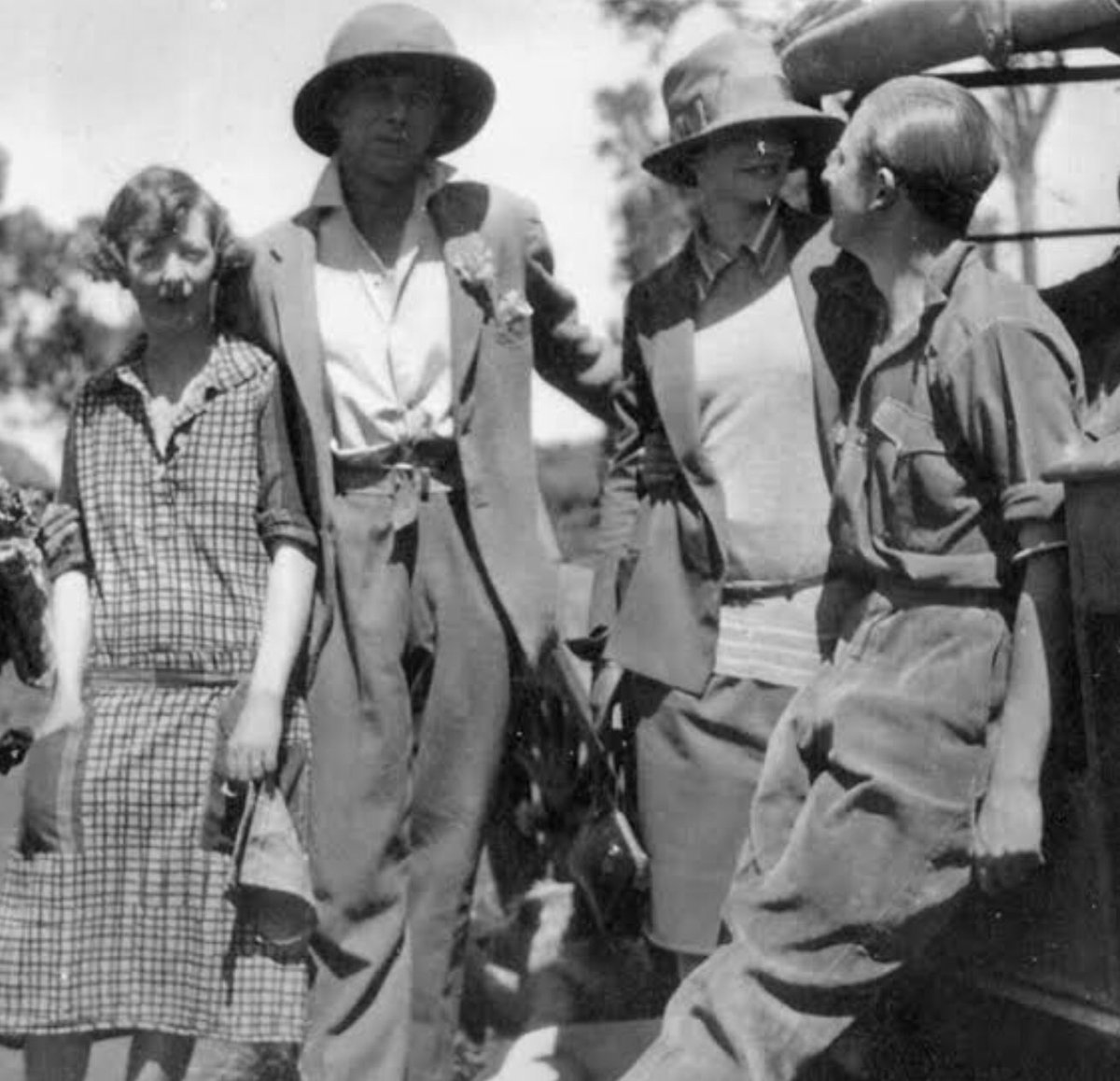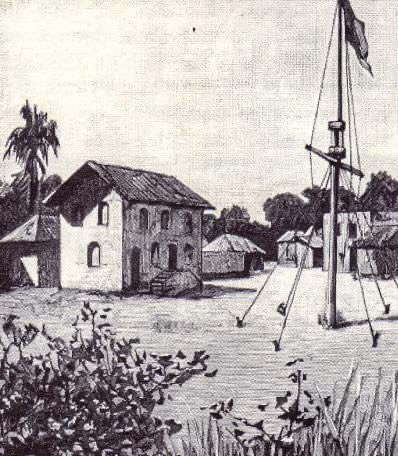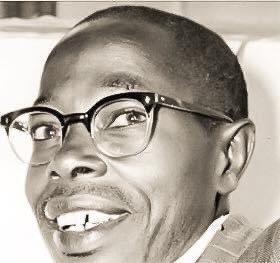#HistoryKeThread: A Time To Prey 

When the year begun in January of 1941, there was much destruction, death and scarcity about Europe. The chilly winter weather offered little, if any, solace. And it snowed with as much rage as the bombs raining down from the skies.
Thousands of miles away, in the sunny, idyllic settler paradise that was Kenya, virtually the entire lot of Europeans was constantly tuned to transistor radios.
In pubs, farmhouses and exclusive clubs, the only news that mattered to them was World War 2 action far north and how Great Britain was faring.
On a gravel trench adjacent to Ngong Road, the dead body of a white man was found at around 3 a.m. that very morning. It lay face down on the floor of a Buick car. The circumstances of the scene seemed to suggest that the car had come to a rest. 

The victim was Josslyn Victor-Hay (pictured), 39, the 22nd incumbent of the Erroll earldom, an aristocratic member of the settler community in Kenya. 

An avid polo player, the blond-haired, fine-looking Lord Erroll, or Joss, as he was called, had been shot at close range, a single fatal bullet driven into his head via his left ear.
At daybreak, as police quickly launched investigations, a shocked settler community woke up to news about Joss’s murder.
News of the death of the former representative of Kiambu in the LegCo quickly spread around the world. One American newspaper, making absolutely no effort at empathy, ran a headline: “Passionate Peer Gets His”.
Those who were familiar with Joss’s ways couldn’t have been surprised by such a headline. And, no, it had nothing to do with his exploits in the sport of polo.
If Joss, rumoured to be “exciting in bed”, was not investing his energies in playing the sport, he was likely out somewhere seducing a woman.
Especially if she was married.
The Daily telegraph referred to him as “a serial womanizer and inveterate gambler”.
After Joss’s murder, no other news mattered. In exclusive membership clubs, pubs and homes, talk about the murder of Lord Erroll took centre stage.
And the more there were mentions of women that Joss was known to have dated, the greater was the interest to know who had committed his murder.
His death had happened as covertly as he had, in 1923, then aged 21, eloped to Kenya for the first time with an older divorcee, the previously twice-married Lady Idina Gordon. Using her money – the bloke was broke - the couple bought a farmhouse in the White Highlands.
Idina and Joss almost immediately became associated with the infamous Happy Valley crowd of Nyandarua’s Wanjohi valley (one day I will write about how the name ‘Wanjohi’ came about).
The couple hanged out with this decadent crop of white settlers that became known for their wife-swapping, cross-dressing and drug abuse. 

Now Lord Erroll lay dead, only weeks after he had become romantically engaged with yet another married woman.
To police officers investigating the murder, Diana’s husband, tycoon Sir Delves Delves Broughton aka Jock, was an obvious suspect.
Indeed, the investigating officers grew confident that Sir Delves was their man when they began to piece together the circumstances under which Joss ended up in Nairobi’s Karen neighbourhood.
So what was Joss up to in Karen? It’s a long story. It starts off down under.
In November of 1940, Sir Delves Broughton (R), who had just abandoned his previous marriage, married Diana Caldwell in Durban, South Africa. 

Sir Delves was 56, wealthy, owned race horses and was hard of hearing. The effects of a thrombosis infection caused him to drag his left foot as he walked.
His bride, Diana, was a lively-spirited blonde with stunning looks, deep blue eyes and also recently divorced. At 26, she was thirty years his junior.
The couple set off for Kenya few days after the wedding. Enroute, Diana had an affair with a fellow passenger, but that Sir Delves was, as the Daily Telegraph reported, “too smitten to object”.
Once the couple arrived in Kenya, they put up at the Muthaiga Club for a couple of days before getting themselves a magnificent house in the affluent neighbourhood of Karen. 

One evening, still in November of 1940, Diana and her husband Sir Delves went out on their first Nairobi date, and in the course of which they met, and became acquainted with, ladies man Joss (pictured). 

Two months later, in mid-January, Diana informed her disbelieving husband that she was seeing another man, who happened to be none other than Joss himself.
The old man took the news very hard, notwithstanding the fact that the couple had a pre-nuptial agreement that if any one of them found another suitor, the other party would not stand in the way.
As he had done when his horse races lost him bets, Sir Delves accepted the painful reality. This however inflicted a toll on him in the days that followed. He immersed himself in episodes of gambling and drinking – in spite of the fact that he was not a habitual drinker.
One day, keen to demonstrate that he had no hard feelings, he summoned up enough guts to invite his wife and her new lover to a farewell dinner of sorts at the Muthaiga Club.
Attending the dinner was a party of four in all, including his wife Diana, Joss and a fourth person in a Ms. June Carberry. The four kicked off with champagne cocktails before dinner.
Towards the end of the dinner, a visibly inebriated Sir Delves raised his glass and jovially proposed a toast to a happy future for his wife and new lover.
The party then broke up and Joss took Lady Diana off to a dance at the Claremont Road House, promising Sir Delves that he would drop his wife off by 3am the next morning.
Sir Delves grimly accepted the proposal before he and Ms. Carberry tottered off to a different corner of Muthaiga Club, from where the cuckolded Mzee and his lone female company tossed additional drinks.
A chauffeur later drove them to Sir Delves’s Marula Road residence in Karen, where they arrived a few minutes after 2am. Sir Delves was too drunk and had to be aided upstairs by Ms. Carberry.
No more than half-an hour later, Joss drove up to the house in the Buick saloon car to drop off Diana as he had promised. After a few minutes of chatter and laughter within the compound of the house, Joss slammed the door and drove away.
Someone shot him dead a few moments later as by 3am his body had already been discovered and police notified. The shooting, detectives reasoned, must have taken place anytime between 3.30am and 3.40am.
The courtroom drama that ensued gripped an entire settler community, newspaper and radio audiences the world over alike.
From police investigations a .32 calibre revolver discharged two bullets. The first one missed. The second hit Joss in the head, killing him instantly. There were no eye witnesses to the murder, and no one could vouch for Sir Delves’s movements after 2am.
Did Sir Delves feign extreme drunkenness to shake off any likely suspicions that he committed the murder? Was the dinner and toast at Muthaiga Club a sham?
Was the 3am deadline that Sir Delves imposed on Joss to drop off his wife intended to provide an opportunity for him to eliminate his rival?
Interestingly, when police officers requested Sir Delves to provide them with his licensed revolvers for examination, they were reminded that only two days before the murder, he had reported the loss, through burglary, of two of his revolvers.
One, a .45 Colt revolver, and the other, a Colt .32 calibre weapon.
How convenient, the police must have thought.
Even more curious was the fact that police officers investigating the alleged theft had found no evidence of a break-in at Sir Delves’s residence.
Surely, police argued amongst themselves, the suspect had made efforts to ensure that there would be no evidence to incriminate him for the murder.
When the investigations turned to possible areas where the suspect was known to have fired his .32 calibre gun, it turned out that he had previously indeed engaged in target practice at a farm in Nanyuki owned by one Jack Soames.
Soames took investigating officers to a spot from which he and Sir Delves had engaged in target practice. It was hoped that police could retrieve .32 bullets that the suspect may have fired.
When Soames fired his revolver from the spot, police moved in to scour the grassy surface on which the bullets had struck.
Voila! After a careful search, police retrieved four .32 spent bullets, which were sent to ballistic experts to determine if they could have been fired from the same gun used in Karen.
The lead investigator must have been imbued with a sense of triumph when the ballistics report came out. According to the report, all the four bullets found in Nanyuki and that found at the scene of Joss’s murder were fired from the same gun.
Moreover, the murdered victim’s ear had traces of black powder such as those found on one of the four live cartridges traced at Soames’s farm. Whoever had fired the bullet that killed Joss had fired the same gun at the farm.
On 26th May 1941, the trial of Sir Delves Broughton kicked off at the Supreme Court in Nairobi. The trial ran for 23 days, overseen by a jury made up of “12 Europeans and such of Nairobi high society as was not away at the war”, as author Nicholas Best wrote.
During the trial, an african witness testified that there were occasions when Diana and his boss, Joss, spent some nights alone at the latter’s residence.
The Prosecution held that Sir Delves was an enraged husband who had a motive to kill. That the suspect had conveniently “lost” his murder weapon which had been linked to both the murder scene and Soames’s farm, was proof that he had motive, the Prosecutor argued.
But if anyone thought that Sir Delves’s fate was sealed, he would have been surprised by the dramatic turn of events in the trial.
The suspect’s South African lawyer, Henry Morris, a King’s Counsel, was, conveniently, a firearms expert. He spent a great deal of time carefully poring over the details of the case and the evidence tabled before court.
Then it struck him.
There, right before his eyes, was a flaw in the Prosecution’s argument.
According to Government witnesses, the murder bullet and Soames’s farm bullets had been fired from the same weapon. The weapon alleged to have been used, from technical information that Morris had gathered, had a five-grooved barrel with a right-hand twist.
Basing their argument on expert technical information, the defence contended that all ·32 revolvers manufactured by Colt had a six-grooved barrel with a left-hand twist.
The Prosecution gulped hard. They didn’t see that coming.
A number of members in the Jury, thoroughly intrigued, scribbled some notes.
So it was not possible, the defence further argued, that Sir Delves’s stolen revolver was the one used to kill Joss. Morris dealt a further blow on the Crown’s argument when he produced a witness, a firearms expert, who argued...
.... that the two sets of bullets – the two found at the scene, and those found at Soames’s farm – had been fired by different weapons.
The Prosecution had failed to produce sufficient evidence to convict the suspect. Strong motive was not enough. Lacking no option, the Jury returned a Not Guilty verdict.
A thunderous applause rang out in court. Sir Delves was a free man.
Stepping out of the dock, he was mobbed by his sympathisers, among them a few men who had been forsaken by their wives for Joss’s love, nay, lust.
As Best wrote, “more than one cuckolded husband.....raised his glass and silently drank to the eternal damnation of Erroll and the good health of his murderer, whoever it might be….”
A few months after the trial, Sir Delves had a fall and got paralysed on his right side as a result. Towards the end of 1941, while visiting Liverpool, he committed suicide by taking a drug overdose.
Obviously happy that the murder trial was over, the former Diana Broughton moved on with her life, getting married a third and finally a fourth time to two prominent settlers. She ended up as Diana Lady Delamere, pictured here holidaying in Kilifi in her later years. 

In contrast to the occasional vivacious atmosphere of a restaurant in Runda that is named after Lord Erroll, Josslyn Victor Hay, his graveyard at Kiambu’s St. Paul’s ACK Church cuts a forlorn image.
The trial of Sir Henry Delves Broughton and hedonistic lifestyles of the Happy Valley Set were the inspiration behind the 1987 movie, White Mischief.
Although the murder was left unresolved for a long time, Lord Carberry’s daughter Juanita, a teenager in 1941, claimed that Sir Delves confessed his guilt to her four days after the murder.
He told her that he had thrown the murder weapon into the Chania Falls at Thika. For fear that he might be hanged, she said she kept the revelation to herself.
Between 2.30am and 2.40am, rather.
• • •
Missing some Tweet in this thread? You can try to
force a refresh

















